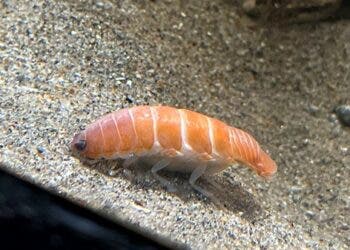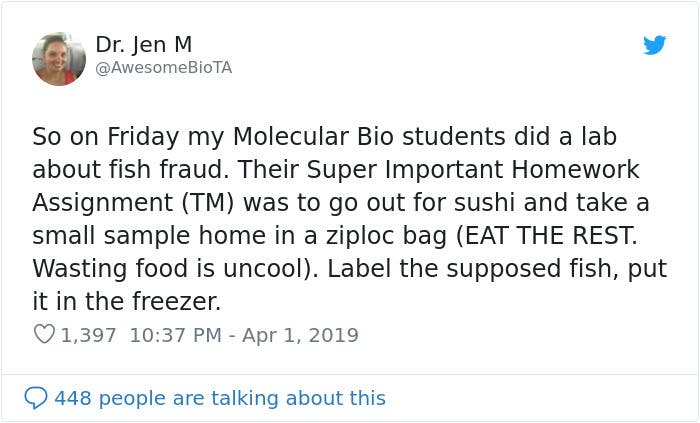Nigiri, sashimi, maki, and many other types of sushi have grown popular over the years, now easy to find in restaurant menus and delivery apps. But the sushi boom came alongside growing concerns over the Anisakis, a parasitic worm that can be transmitted to humans who eat raw or undercooked seafood.

A group of researchers at the University of Washington report on a 238-fold increase in parasite abundance since the 1970s. This could have consequences for the health of both humans and marine mammals.Other studies have looked at the abundance of the worm, but this is the first-time researchers look closer at its expansion over time.
“This study harnesses the power of many studies together to show a global picture of change over a nearly four-decade period,” said corresponding author Chelsea Wood.
Anasakis starts its life cycle in the intestines of marine mammals, is excreted into their feces and then infects fish, crustaceans, or krill. Eating the worms can lead to nausea, vomiting, and diarrhea, which ends when the worm dies a few days later. It’s not usually diagnosed, as people mistake it with food poisoning.
Most seafood processors and sushi chefs are trained at spotting the worm in the fish and taking it out before they reach the customers in stores and markets, Wood explained. The worms have up to 2 centimeters in length, similar to the size of a 5-cent nickel.
Wood and the group of researchers looked at past papers that had mentions of the Anisakis worms, as well as another worm called the “cod worm.” They focused on the studies that included estimates of the abundance of the worm at different points in time, finally discovering the 238-fold increase of the Anisakis.
While the risks of eating the worms are fairly low for humans, the study warned over the impact they could have on marine mammals like dolphins, whales, and seals.
“One of the important implications of this study is that now we know there is this massive, rising health risk to marine mammals,” Wood said. “It’s not often considered that parasites might be the reason that some marine mammal populations are failing to bounce back.”
The reason for the exponential increase of the Anisakis worms is not fully clear for the researchers, but they link it with climate change, growing nutrients from fertilizers and runoff, and an increase in marine mammal populations – all happening on the same period.
In the US, marine mammals are protected since 1972 by a protection act, which led to an increase in the population of many species. As the increase in the parasite’s population took place during the same period of time as the hike in marine mammals, Woods thinks the two are related.
“The increase in parasitic worms actually could be a good thing, a sign that the ecosystem is doing well. But, ironically, if one marine mammal population increases in response to the protection and its Anisakis parasites profit from that increase, it could put other, more vulnerable marine mammal populations at risk of increased infection,” Woods said.
The study was published in Global Change Biology.






